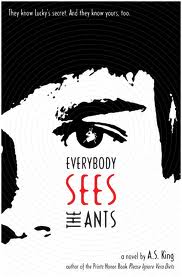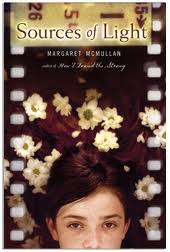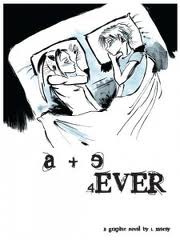Everybody Sees the Ants
A. S. King
 Lucky Linderman’s name is pretty ironic, considering how likely he is to get beat up by the bully, ignored by his parents, and looked down upon by school administrators. He would really much rather just fly below the radar by everyone, but manages to get too much attention from all the wrong people who either (a) want to do him harm, or (b) “help” him. Actually, Lucky would rather be sleeping.
Lucky Linderman’s name is pretty ironic, considering how likely he is to get beat up by the bully, ignored by his parents, and looked down upon by school administrators. He would really much rather just fly below the radar by everyone, but manages to get too much attention from all the wrong people who either (a) want to do him harm, or (b) “help” him. Actually, Lucky would rather be sleeping.
Lucky is a freshman in high school, so life sucks to begin with, but what makes it worse is that Nader constantly has it out for him — like in the corner of the school’s locker room and at the community pool — and Lucky feels too weak to protect himself. He stopped telling teachers or his parents about the bullying back in elementary school once he realized that nothing would ever be done about it. His dad is too distracted by his grief for a Vietnam War POW/MIA father he never got to meet, and his mom is too busy swimming laps and running from her own problems. So Lucky finds solace in his dreams (where he finds himself to be bigger, stronger, and smarter than he ever feels in real life) and in his mission (to rescue his missing, presumed-dead grandfather). Ultimately, he’s going to have to figure out a way to save himself.
Sources of Light
Margaret McMullan
 Samantha and her mom have just moved from Pittsburgh, Pennsylvania to Jackson, Mississippi in the year 1962, when segregation is still firmly established in much of the south. Sam’s dad died a war hero, and they decided to move closer to her dad’s hometown, where Sam’s mom got a job as a professor at a local white college. When her mom decided to give a series of lectures at Tougaloo, an all-black college in Jackson, the two slowly begins to turn against them, warning Sam and her mom that they don’t like “outsiders.” In the meantime, her mom’s friend, Perry Walker, teaches Sam how to look through a camera lens to not just take pictures, but to capture stories in the people, places, and things around her, even when those things are ugly or scary or dangerous.
Samantha and her mom have just moved from Pittsburgh, Pennsylvania to Jackson, Mississippi in the year 1962, when segregation is still firmly established in much of the south. Sam’s dad died a war hero, and they decided to move closer to her dad’s hometown, where Sam’s mom got a job as a professor at a local white college. When her mom decided to give a series of lectures at Tougaloo, an all-black college in Jackson, the two slowly begins to turn against them, warning Sam and her mom that they don’t like “outsiders.” In the meantime, her mom’s friend, Perry Walker, teaches Sam how to look through a camera lens to not just take pictures, but to capture stories in the people, places, and things around her, even when those things are ugly or scary or dangerous.
This is a compelling account of American race relations that is recommended to middle grade readers; many will relate to the feeling of being an outsider or as the one who seems to see and look at things different than others, and girls will especially relate to Sam’s relationship with Stone. Another great historical fiction novel by Margaret McMullan is When I Crossed No-Bob.
a + e 4ever
I. Merey
 This graphic novel overflows emotion, anxiety, passion, and curiosity from pages that contain a Japanese/manga personality (if not format). Many of the characters are drawn with feminine features, despite the gender, with slim bodies, girlish facial features, and longer hair . . . unfortunately for Ash.
This graphic novel overflows emotion, anxiety, passion, and curiosity from pages that contain a Japanese/manga personality (if not format). Many of the characters are drawn with feminine features, despite the gender, with slim bodies, girlish facial features, and longer hair . . . unfortunately for Ash.
Asher is a boy who has always been sensitive and quiet, and sort of looks like a girl. Eulalie is a tough girl with a thick skin and a rough attitude. They become fast friends, the sort of friends who have mutual experiences with bullying and being outcasts. Unfortunately for Eu, it only takes a few months of their friendship for her to admit that she likes Ash. And Ash responds that he has a crush on the cutest boy in their high school. But it turns out that Ash doesn’t only like boys; he just doesn’t want a relationship with Eu.
From first sexual experiences (bad) to first kisses (good) and late nights (bad) to early afternoons (good), this stunning literary experience takes readers through some of the darkest times of teenage angst, confusion, anger, and love. And leaves us breathless. (The characters are as stunning as the pictures portray them to be.) Definitely for older teen readers, though.
———————————————————————-
Katherine Vasilik, A/YA Librarian
J. F. Kennedy Library
Piscataway, NJ
telephone: 732-463-1633 x6
email: kvasilik@piscatawaylibrary.org or kate_thelibrarian@yahoo.com
blog: http://katethelibrarian.blogspot.com
facebook: http://www.facebook.com/piscatawaylibrary
